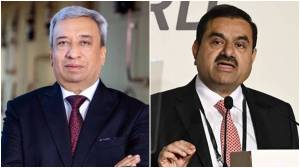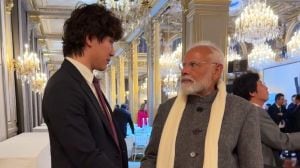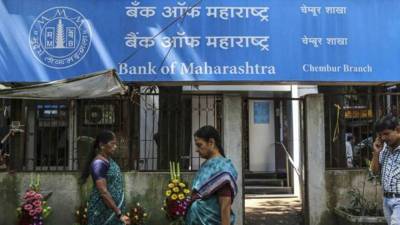By Shubhangi Shah
In her book The Woman Who Climbed Trees, writer Swati Ravindra, the winner of 2023 Tata Literature Live! First Book Award – Fiction, writes of a young Meena, a kid, who in the run-up to her sister’s wedding, discovers her two elder sisters engaged in a private act. Years later and married, at a new home and largely neglected by her husband, Meena is faced by complex emotions. She is drawn to Kumud, her sister-in-law, emotions that don’t fit and aren’t to be experienced in a traditional heteronormative household. Yet, she exists, fully aware of her emotions and herself, yet not having the agency to act upon it. Meena’s love for Kumud remains unrequited.
In a world of romance literature, dominated by the tales of Romeo-Juliet and Elizabeth-Mr Darcy, the story of Meena-Kumud reads as refreshing as the trend of such stories. As Rashmi Menon, executive editor, HarperCollins, says, “Queer romance has become hugely popular in recent times.”
Not only queer romance, “we are witnessing an increased visibility, demand and acceptance of queer books,” says Vijesh Kumar, associate vice-president, local sales, at Penguin Random House India. “This is evident from the increased number of books mainstream publishers are publishing in this space,” he adds. Milee Ashwarya, publisher, Penguin Random House India, adds: “There has been a growth in LGBTQIA literature in India over the past decade.”
While the publishers are now keener to publish more queer literature, it wasn’t always an easy ride for the writers to get their writings published. “When my first queer-themed book, YA novel Slightly Burnt, came out ten years ago, there was homophobia from the publishers’ team itself. Schools were reluctant to talk about it, bookshops rarely stocked it. Today, publishers are falling over themselves to bring out more queer literature. The reading down of Section 377 has certainly made a difference,” says writer Payal Dhar.
Her most recent It Has No Name is a coming-of-age tale of a gay teen in a small town in India. On whether the idea behind was personal or political, Dhar says, “The idea was to write a story about a young person asserting their identity and to normalise it, irrespective what that identity was. The other part was to write a queer-themed book that was uplifting and positive,” she says, highlighting that the “mainstream queer representations have always seen LGBTQ+ stories as tragic and terrible. But gays, lesbians, and queers of all sorts have always existed throughout human history, and they have found ways to thrive despite society. Those stories need to be told as well.”
And more and more themes are being explored that straddle both the personal and the political. “In the past few years, we’ve had more intersectional texts engaging with caste and gender in particular. I think the striking down of 377 freed up any last reservations that publishers may have had,” says Karthika VK, publisher, Westland Books. Having been liberated from the shackles of Section 377 appears to be one of the reasons.
Writer Sharif D Rangnekar had his critically acclaimed Straight to Normal: My Life as a Gay Man in mind way back in 2012. “In fact, I had a contract with the same publisher. But with the law being what it was, there was a feeling that I should fictionalise, so that I could at least safeguard certain interests of the extended family. I even had a pseudonym,” the writer says.
Six years later in 2018 and having quit his 9-5 job, it was his mother who nudged him to give it a try. “She said, ‘You were attempting to write, why don’t you do it now. And it’ll help other people if they have something like this out there’,” Rangnekar told FE. And that was the purpose of his first book, “to sort-of create awareness”.
“When Section 377 was read down, I felt more free. It was a liberating as a process,” he highlights. Rangnekar followed it up with Queersapien (2022), “which was obviously on gender and sexuality but I was reflecting on life in general, such as the power structure, patriarchy, family and desire,” he says.
Interestingly, while publishers have their guardrails for what is published for kids, a number of children’s books are exploring homosexuality. For example, Ameya Narvankar’s Ritu Weds Chandni, a picture book on two women in love and getting married.
While writers are exploring newer themes, and more books being published, “ I believe that the market is still niche,” says Kumar of Penguin Random House India. “While big chains and independent stores are buying these books, the sales are average. In June, being a pride month, we are running theme-based promotions at many key retailers to promote queer books to build awareness and drum up sales,” he says.
While Peter Modoli, associate vice president, marketing & publicity, Penguin Random House, says the marketing of queer books doesn’t require a different strategy, Karthika VK of Westland Books says, “Every single book is unique in itself and while we might cross-promote titles by genre or theme, each work demands its own specific outreach and planning. For instance, when we published Queeristan by Parmesh Shahani, we made sure that HR and workplace managers were made aware of its existence, as well as book clubs that focus on queer literature.”
A rainbow litfest
Offering a platform for more queer voices is the Delhi-based Rainbow Litfest, which started in 2019 and has had three editions so far.
Speaking on striking a balance so as not to box a community while offering a platform, Rangnekar, the festival director, says, “ We’re not heterophobic, but queer and inclusive. While definitely catering to the queer community, we are open to others who are curious, but we don’t other them. Hence, our speakers have always been a mix, including the likes of Dr Shashi Tharoor, Nandita Das, Kalki Koechlin, among others,” he says.
Beyond English
With more acceptance of same-sex love, more numbers of books are being published. However, if the phenomenon is inclusive enough still remains a question mark, especially with more number of books being published in English, borrowing the Western vocabulary, while vernaculars remain to be explored.
“Probably, more books are being published now, as there is much more acceptance of same-sex love, so fewer chances of book bans or lawsuits. But one must keep in mind that one is talking only of Indian writing in English. Gay and same-sex themes in regional literature need to be explored,” says Renuka Chatterjee, vice-president, publishing, at Speaking Tiger Books.
Seconding that, Rangnekar gives the example of pronouns in English, “the terms that don’t exist in every language that we have here.”
On this, Dhar is reminded of a column she wrote on “how Western entertainment and social media has made many youngsters convinced that ‘coming out’ publicly is the only authentic be to be queer. As one of the psychologists I interviewed said, these youngsters don’t realise what they see on television or the internet are whitewashed slices of the whole picture, that nobody talks about the risks of coming out or support systems. So I do think it’s important for literature to take heed of that and not blindly copy American culture in reinforcing ideas that could be irrelevant at best, harmful at worst,” she says.









